
Digital transformation Itho Daalderop
For at least a decade, Itho Daalderop has been adding digital components to its products and services with a view to optimising indoor climate systems. Digitalisation raised all kinds of questions for the firm about data, security and connectivity. PwC used the d.quarks model to help Itho Daalderop analyse its operations and identify what skills it would need to take the next step in its digital transformation.
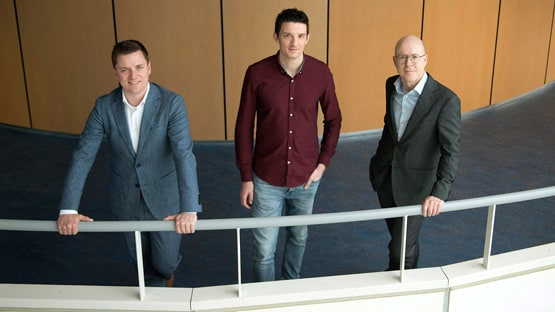
From left to right: Danny Gerritsen (PwC), Nick Winkelman and David Eddes (both Itho Daalderop).
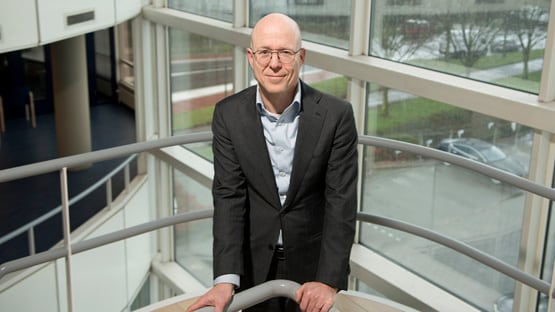
"Our firm has cornered a sizeable share of the market in the products and systems that are weaning the Netherlands from its dependence on natural gas."
Technology solutions for a comfortable, healthy and energy-efficient indoor climate
Itho Daalderop develops, manufactures and sells heating, hot water, ventilation and control technology solutions for a comfortable, healthy and energy-efficient indoor climate. Its primary customers are construction and building services firms. The firms Itho and Daalderop, each with a long history, merged in 2009-2010. In 2015 they were joined by Klimaatgarant, an Itho Daalderop spin-off founded in 2012. Itho Daalderop has a manufacturing location in Tiel and sales offices in Schiedam and in Zellik (near to Brussel in Belgium).
"We’ve been manufacturing heat pumps for a very long time", explains David Eddes, CFO and IT director at Itho Daalderop. "And its performance is monitored remotely." The firm has cornered a leading market position in the products and systems that are weaning the Netherlands from its dependence on natural gas. "And we manufacture advanced ventilation systems with heat recovery, for example", continues Eddes. "We develop and manufacture everything ourselves. In new-build and renovation projects, homes must comply with the energy performance standards prescribed by the government, such as EPC and BENG. These standards set requirements for equipment in homes, with which we comply. Because we have been measuring performance for many years, we can give guarantees on that performance."
Data, security and connectivity
In 2012, Klimaatgarant started to provide guarantees on the indoor climate and consumption, provided that the shell of the home and the equipment - including the heat pump - meet certain requirements. The firm was already offering heat pumps on lease. To issue a performance guarantee, it had to measure the performance of each individual unit continuously and transmit and process the data. This is just one example of digitalisation in the field in which Itho Daalderop operates. The company has developed the Spider, a smart thermostat that allows customers to divide their house into indoor climate zones that they can control separately. Itho Daalderop has also responded to customers’ wish to control units remotely or monitor consumption and is developing secure and stable add-ons to the internet of things.
As the firm raced to keep up with the rapid rise of digitalisation and to find answers to data, security and connectivity issues, things sometimes went wrong. Eddes: "Success depends on the right partners. A foreign company that the firm had hired to do programming started charging huge fees for modifications. Now we only work with firms that we know and trust."
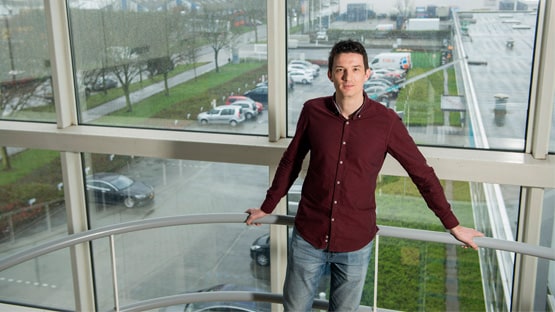
"By now, we all believe that we need more than technology to take our innovations to the next level. We need to master all the disciplines and we’ve really started thinking in terms of business cases that cover every aspect."
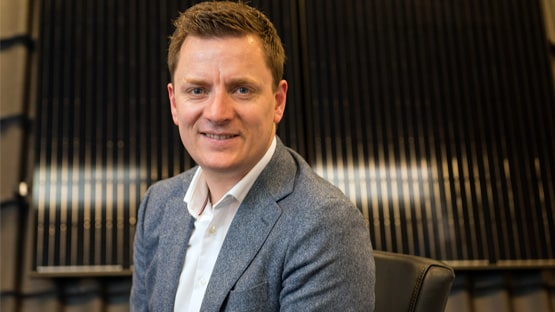
"From experience we know that technology is only part of a successful transformation. We have therefore asked them whether we could look more broadly than just at technology."
Technical advice data warehouse
Itho Daalderop initially asked PwC for technical advice on setting up a data warehouse. Danny Gerritsen, from the Risk Assurance department of PwC, was impressed by the firm. "I saw that they had very innovative products and services and wanted to help them with their technical questions. From experience we know that technology is only part of a successful transformation. We have therefore asked them whether we could look more broadly than just at technology."
David Eddes: "We’d been on this digital journey for some time. We had created a roadmap for connectivity, made investments, entered into partnerships for the software and hardware, and worked hard to secure our ever-widening IT environment. As well as products, we were also delivering more services. It was true that we needed to take a step back and look at the whole picture."
BXT and d.quarks
Danny Gerritsen introduced the firm to the BXT philosohy, which PwC uses to examine digital transformation from three vantage points: Business, eXperience and Technology. "Businesses need to look at all three of these elements to ensure a successful transformation. In the case of the Spider-thermostat, the technology was great but the business case probably wasn’t not strong enough. Or maybe it fell short in terms of customer experience, whether end consumer or building services engineer. Good technology alone is not enough."
Gerritsen and his PwC colleagues started by organising a workshop with the firm’s management to scrutinise its business strategy. "Successful digital transformations require a driving force from the management", says Gerritsen. "The board members were all very keen to get to work. That told me that this was an innovative, enterprising company. The PwC d.quarks model, that surveys which skills an organisation needs to achieve a certain level of digital transformation, helped them to identify which digital building blocks Itho Daalderop needed to improve."
"Interviews with staff helped us identify the skills that required attention", explains Gerritsen. "We then fleshed out these skills specifically for Itho Daalderop, in consultation with the management. The result is a digital roadmap that allows the firm to move forward."
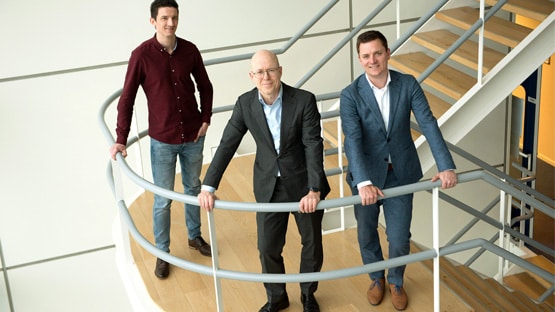
"Successful digital transformations require a driving force from the management. The board members were all very keen to get to work. That told me that this was an innovative, enterprising company."

Nick Winkelman, Programme leader Digital at Itho Daalderop
Digital Transformation Team
One of those skills, involves setting up an overarching body that elevates all the digital transformation activities above the silos of the Innovation, ICT and Commerce departments. "That’s been very important for us", says Nick Winkelman, who heads the board, which Itho Daalder has dubbed the Digital Transformation Team.
Besides Winkelman, who has a close affinity with the marketing and front-end side of the organisation, is Eddes - together with his colleague of Innovation - sponsor of the team. Employees of the IT and Innovation departments are also represented on the team. "By now, we all believe that we need more than technology to take our innovations to the next level", says Winkelman. "We need to master all the disciplines and we’ve really started thinking in terms of digital business cases that cover every aspect. We also take decisions as a team now, ensuring broad support."
In-house development or outsourced
Do you develop products in-house or outsource the work to partners? It’s a typical dilemma that the digital transformation team is now facing. "Our clever engineers prefer to do everything themselves", says David Eddes, "and I can understand that, especially because it was their work that fuelled our growth. But in the transformation we are undergoing, it’s important to look at things rationally and choose between 'make' or 'buy'."
For example, what about digital access by third parties to Itho Daalderop’s data, for example building services engineers who log in for information about a specific unit or to order a part? "We need to be absolutely certain that those data are secure, in the same way that we need to secure the data that people can access from apps or our website", says Winkelman. "We initially thought we’d retain identity and access management (IAM) ourselves, but when we realised how much work it is, what the risks are and what it costs, we soon decided to outsource."
Another example is Itho Daalderop’s choice to start working on a low-code platform that Itho Daalderop’s staff can use to build apps without their needing extensive coding experience. Winkelman: "The programmers in our firm would rather do it themselves. But this step is making us much more agile. Our implementation partner does the hard graft and our time to market is much shorter. We already have the first results: our updated website and IT0architecture, which we developed in cooperation with customers."
Innovation not last on the list
Now that the firm’s digitalisation plans have been tabled by the Digital Transformation Team, its members can focus on how they would like to move forward. "We’re trying to channel things in a specific direction", says Winkelman. "For example by prioritising all our plans. We’ve identified a number of guiding principles to help us assess our ideas. For example, we prefer to work from single sources of truth."
The Digital Transformation Team now also manages the budget for all digital expenditure. "It means that we have more control over our investments", says Eddes. Gerritsen zeros in on this comment: "As I see it, what’s important is that your team doesn’t put technology and innovation last on the list. That’s an important basis for a sound business case. A CFO or management board is just as likely to be obstructive in that respect."
When asked where he thinks Itho Daalderop will be in five years’ time, Winkelman does not hesitate. "By then we’ll have set up our organisation and processes as efficiently as possible and we’ll be handling our services digitally as much as possible, both for building service engineers and consumers. In five years’ time, Itho Daalderop will be in the digital vanguard of the construction and building services sector."



















